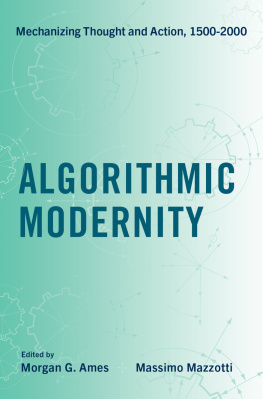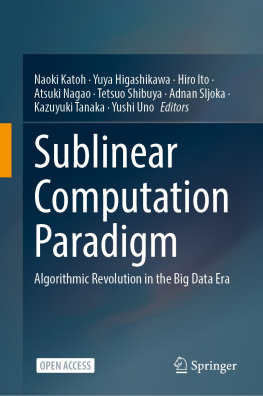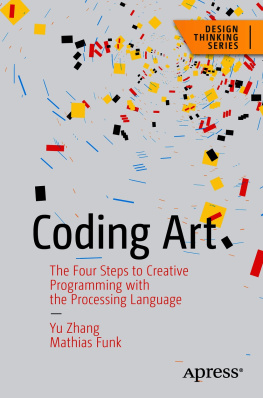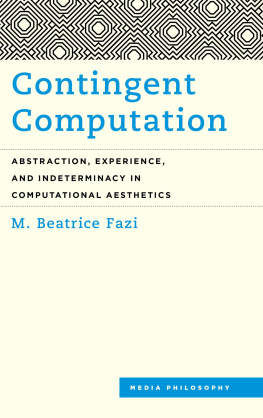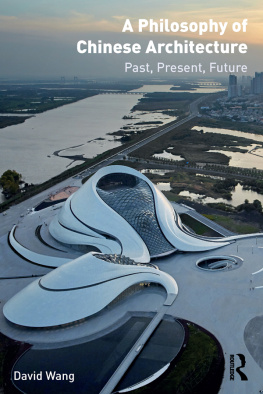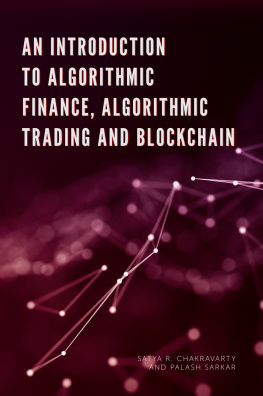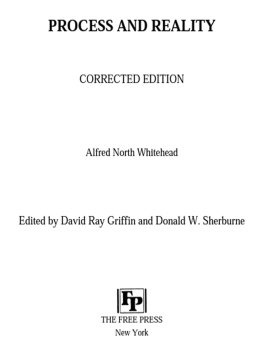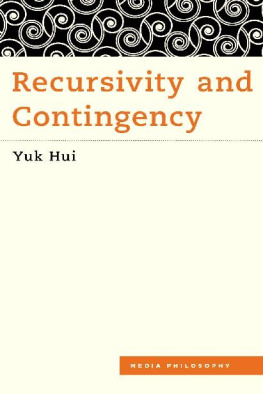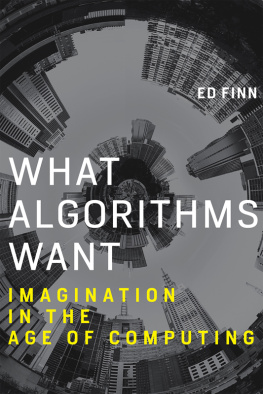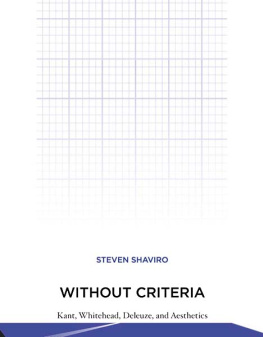Contagious Architecture
Technologies of Lived Abstraction
Brian Massumi and Erin Manning, editors
Relationscapes: Movement, Art, Philosophy, Erin Manning, 2009
Without Criteria: Kant, Whitehead, Deleuze, and Aesthetics, Steven Shaviro, 2009
Sonic Warfare: Sound, Affect, and the Ecology of Fear, Steve Goodman, 2009
Semblance and Event: Activist Philosophy and the Occurrent Arts, Brian Massumi, 2011
Gilbert Simondon and the Philosophy of the Transindividual, Muriel Combes, translated by Thomas LaMarre, 2012
Contagious Architecture: Computation, Aesthetics, and Space, Luciana Parisi, 2013
Contagious Architecture
Computation, Aesthetics, and Space
Luciana Parisi
The MIT Press
Cambridge, Massachusetts
London, England
2013 Massachusetts Institute of Technology
All rights reserved. No part of this book may be reproduced in any form by any electronic or mechanical means (including photocopying, recording, or information storage and retrieval) without permission in writing from the publisher.
Library of Congress Cataloging-in-Publication Data
Parisi, Luciana.
Contagious architecture : computation, aesthetics, and space / Luciana Parisi.
p. cm.(Technologies of lived abstraction)
Includes bibliographical references and index.
ISBN 978-0-262-01863-0 (hardcover : alk. paper)
ISBN 978-0-262-31262-2 (retail e-book)
1. Space (Architecture). 2. ArchitecturePhilosophy. I. Title.
NA2765.P36 2013
720.1dc23
2012027959
10 9 8 7 6 5 4 3 2 1
Series Foreword
What moves as a body, returns as the movement of thought.
Of subjectivity (in its nascent state)
Of the social (in its mutant state)
Of the environment (at the point it can be reinvented)
A process set up anywhere reverberates everywhere.
The Technologies of Lived Abstraction book series is dedicated to work of transdisciplinary reach inquiring critically but especially creatively into processes of subjective, social, and ethical-political emergence abroad in the world today. Thought and body, abstract and concrete, local and global, individual and collective: the works presented are not content to rest with the habitual divisions. They explore how these facets come formatively, reverberatively together, if only to form the movement by which they come again to differ.
Possible paradigms are many: autonomization, relation; emergence, complexity, process; individuation, (auto)poiesis; direct perception, embodied perception, perception-as-action; speculative pragmatism, speculative realism, radical empiricism; mediation, virtualization; ecology of practices, media ecology; technicity; micropolitics, biopolitics, ontopower. Yet there will be a common aim: to catch new thought and action dawning, at a creative crossing. Technologies of Lived Abstraction orients to the creativity at this crossing, in virtue of which life everywhere can be considered germinally aesthetic, and the aesthetic anywhere already political.
Concepts must be experienced. They are lived.
Preface: Weird Formalism
This book is about the logic of computation and its ingression into culture. It describes a world in which algorithms are no longer or are not simply instructions to be performed, but have become performing entities: actualities that select, evaluate, transform, and produce data. In this world, algorithms construct the digital spatiotemporalities that program architectural forms and urban infrastructures, and are thereby modes of living. This is not to contend that algorithms are the building blocks of a physical universe in which any kind of thought can be fully computed. Instead, a closer look at algorithmic procedures shows that incompleteness in axiomatics is at the core of computation. These performing entitiesalgorithmsexpose the internal inconsistencies of the rational system of governance, inconsistencies that correspond to the proliferation of increasingly random data within it. Instead of granting the infallible execution of automated order and control, the entropic tendency of data to increase in size, and thus to become random, drives infinite amounts of information to interfere with and to reprogram algorithmic procedures. These entropic bursts of data within computation add new information to the recursive functions of control, without becoming simply incorporated or used by the system (i.e., by transforming dissipative energy into information). Entropic data are operative agents of irreducible size that crack and rescript the source program of the system from within. The system of governance defined by the digital world of data can therefore no longer rely upon the smooth programming of tasks, the exact reproduction of rules, and the optimization of conducts, habits, and behaviors. Randomness has become the condition of programming culture.
This book does not imagine a world in which rationality has been replaced by the arbitrariness of information. Far from it: computational randomness corresponds to infinite volumes of data that are meaningful contingencies which refuse to be fully comprehended, compressed, or sensed by totalities (i.e., by the mind, the machine, or the body). This also means that algorithms do not exclusively channel data according to preset mechanisms of binary synthesis (0s and 1s), as they also enumerate the indeterminate zone between finite states. This new function of algorithms thus involves not the reduction of data to binary digits, but the ingression of random quantities into computation: a new level of determination that has come to characterize automated modes of organization and control. Far from making the rational system of governance more efficient, this new level of determination forces governance to rely on indeterminate probabilities, and thus to become confronted with data that produce alien rules. These rules are at once discrete and infinite, united and fractalized.
From another standpoint, the emphasis on the new tendencies of algorithms to be overshadowed by infinite volumes of data explains the ingression of computational logic into culture. What is important here is not that culture has become doomed by the automated rules that transform its variety of expressions into data that can be classified, profiled, and consumed. Instead, the addition of random quantities to finite procedures turns automation into a computational adventure resulting in the determination of new cultural actualities. Instead of being exhausted by the formalism of rules or symbols that execute instructions, automated processing requires a semiopen architecture of axioms, whereby existing postulates are there to be superseded by others that can transform infinite quantities into contingent probabilities. Incompleteness in axiomatics thus brings to light the fact that automated processing is not predeterminate, but rather tends toward new determinations. In making this claim I do not intend to suggest that computation can now explain culture, aesthetics, and thought because it can account for change. My contention is rather that there is a concrete culture, an aesthetic and a mode of thought, specific to the computational production of new probabilities.
This is why this book argues for a new digital space that no longer or not fully coincides with Deleuze and Guattaris notions of striated (metric) and smooth (vectorial and projective or topological) space. Striated space is gridded, linear, metric, and optic. It is also described as the space of logos, based on the deductive reduction of infinities to discrete unities constituting the building blocks of reason, the function of which is to find solutions to occurring problems.
In this book the striated space corresponds to the digital matrix of points that do not change over time: a prefixed, gridlike architecture derived from postulates based on discrete sets of algorithms through which optimal forms can be constructed. This is the striated space of the city, the urban planning deduced from the exact relation between points, which establishes an infrastructural grid that predetermines movement. In the last twenty years, however, the digital mapping of space has been intersected by a new tendency in digital design that has more fully embraced the power of computation to generate new architectural forms or smooth surfaces. By drawing on biological notions of morphogenesis, and thus by relying on the capacity of forms to change over time, algorithms have become generative components for form-finding and pattern-making architectures. The new centrality of generative algorithms (but also cellular automata, L-systems, and parametricism) in digital design has led to the construction of various topological geometries and curvilinear shapes that have come to be known as blob architectures. While the gridlike architecture of striated space (or digital mapping) places discrete unities at the center of a design made of points connected by lines, the topological curves of smooth space (or blob architecture) starts from the generative power of a point, the meshing and folding of which becomes the condition for the emergence of a new form.
Next page

